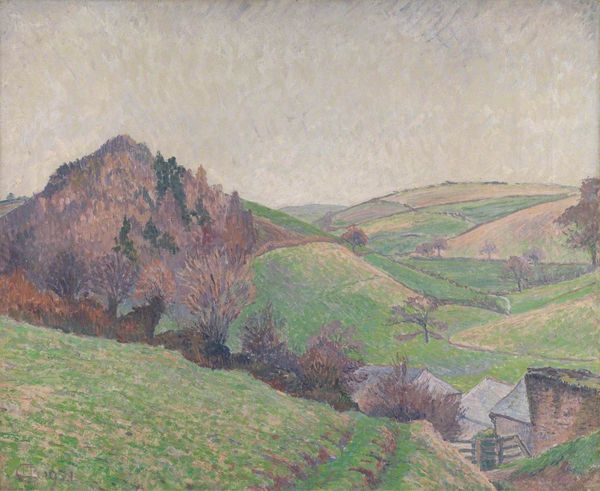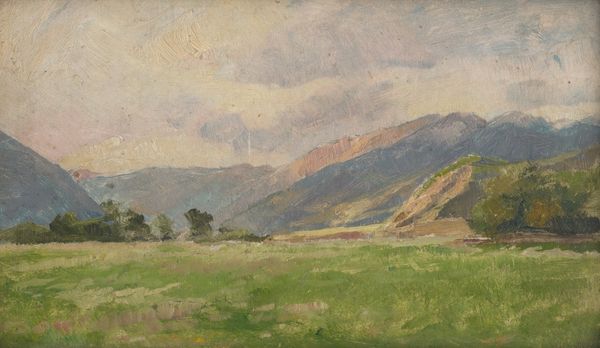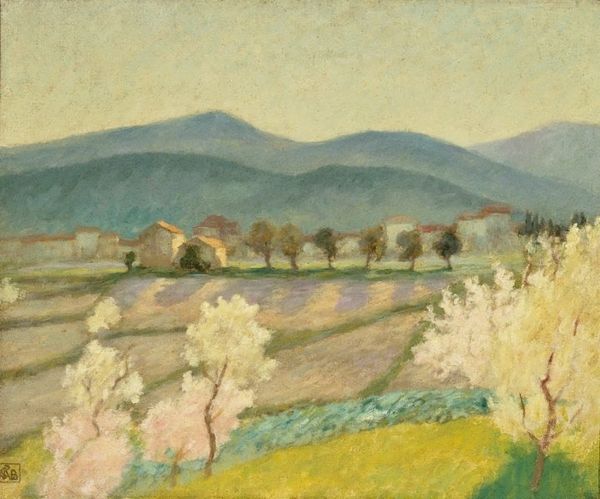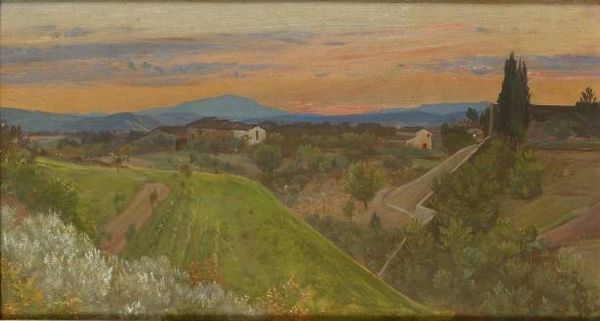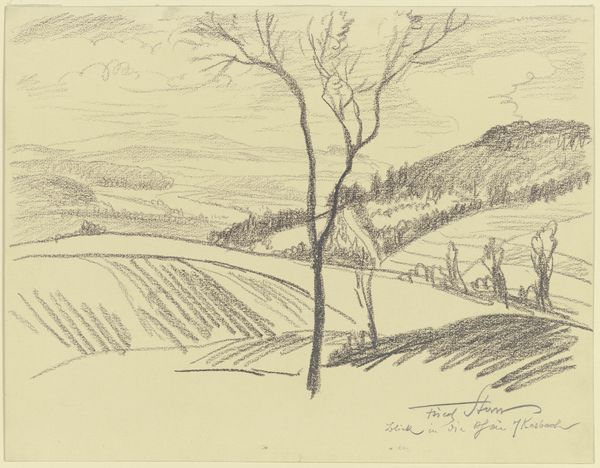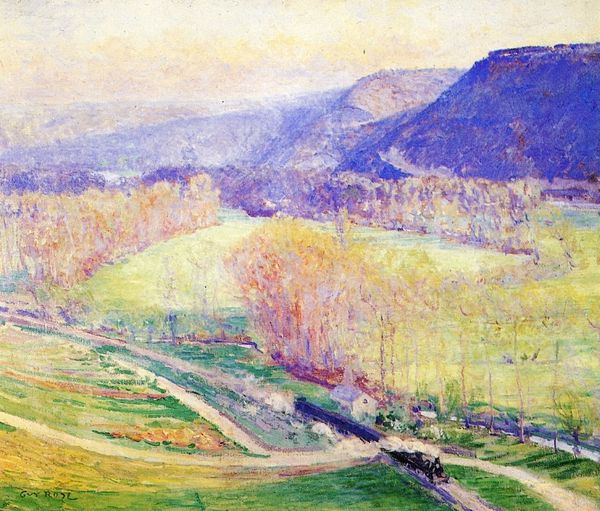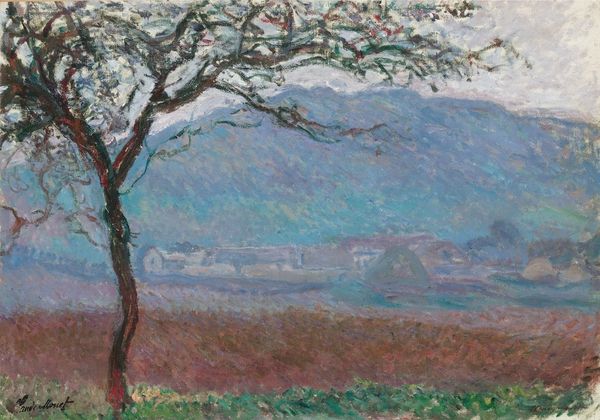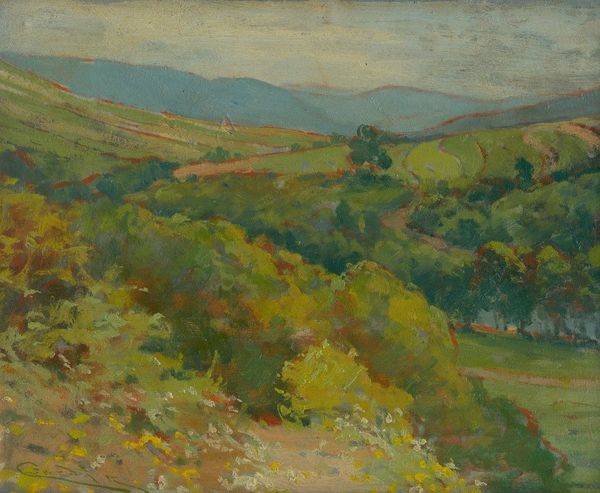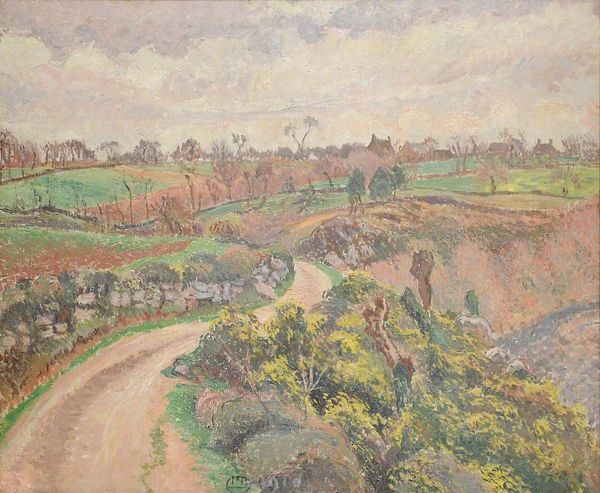
Copyright: Public domain
Editor: This is "Almond Trees, Le Lavandou," painted by Lucien Pissarro in 1923. It's an oil painting, and it feels like such a peaceful scene, with those soft colors and gentle slopes. What really stands out to me is how the blossoming trees seem to frame the distant mountains. What do you see in this piece? Curator: The almond tree itself is incredibly symbolic. Across cultures, it signifies awakening and rebirth, and even hope. In this Post-Impressionist landscape, the blossoming trees might represent not just the literal arrival of Spring, but also the renewal Pissarro sought after the First World War, wouldn’t you say? What other details jump out to you? Editor: I also noticed how he used these little dashes of color, almost like he was building the landscape out of tiny gems. Curator: Precisely! That pointillist technique echoes back to his father, Camille Pissarro. Consider how these small dabs, juxtaposed with the bare branches, create this sense of transient beauty. Lucien employs a similar shorthand with the mountains and village, hinting at permanence juxtaposed with fragility. It gives this vista an eternal quality, no? Editor: I think I do see that! There's a kind of tension there, a fleeting moment captured against this much bigger landscape that’s been here for ages. It’s more complex than I first thought. Curator: Exactly! Art isn’t just about the scene; it is about how cultural memories inform how we observe and document our observations through painting. The painting reflects how landscapes are filled with psychological, and perhaps historical meaning, beyond pretty aesthetics. What a beautiful exploration! Editor: I agree! Thanks, that really changed how I see the painting, from a pretty picture to something really full of meaning!
Comments
No comments
Be the first to comment and join the conversation on the ultimate creative platform.
